
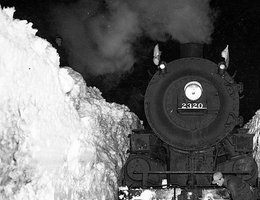
Just as the Nebraska economy was settling down after the war, the blizzard of 1948-49 hit. Its magnitude staggers the imagination. It was the worst blizzard in recorded history. A series of storms began in November of 1948 and continued straight through to February of 1949. The snow stopped trains, buried houses, and threatened nearly a million head of cattle. Operation Haylift was a massive, perhaps desperate, effort to save livestock.
By the fourth week in January, it was evident that some two million snowbound cattle and sheep in Nebraska and surrounding areas were in jeopardy. To feed stranded livestock, the Air Force launched Operation Hayride, better known as Operation Haylift, using C-47 and C-82 cargo planes.
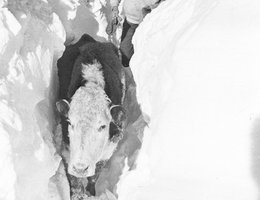
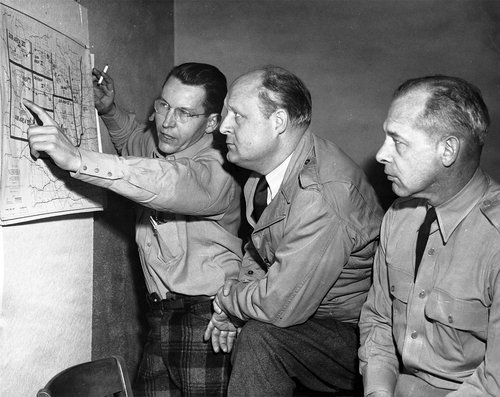
From Lincoln, Governor Val Peterson learned that counties lacked the money and equipment to open roads. Deep snow and drifts kept cattle from getting to feed. In some cases, rural people were exhausting food and fuel supplies. The Governor declared a state of emergency in most of Nebraska. A command post for "Operation Snowbound" was set up in the basement of the Capitol building.
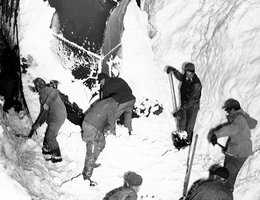
The situation was critical. Estimates were that in 29 counties in the storm emergency area, there were over one and a half million cattle worth over 250 million dollars (over two billion in 2008 dollars). Governor Peterson got an amateur radio message from his home town of Elgin, in hard hit Antelope County:
"My cow is hungry as h--l. Please toss her a bale of hay when you go over."
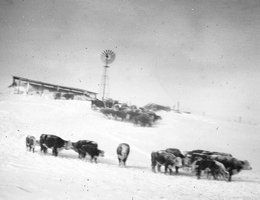
Even before Operation Snowbound began, local and county leaders formed emergency teams to work with military and civilian agencies in directing bulldozers, deploying amphibious vehicles called Weasels and aircraft, and assisting Operation Haylift flights.
In Blaine County, County Treasurer Dan Norris of Brewster, conducted a telephone survey to find out the need, but to contact ranchers without phones, he sought the aid of Herb Hardin, a North Platte pilot. Hardin flew over the ranches and dropped notes tied to lumps of coal, giving instructions on how to signal if they needed hay. Norris said, "We saw much trouble from the air," including seven cows lying dead near one ranch house.
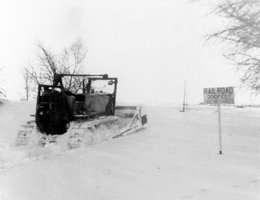
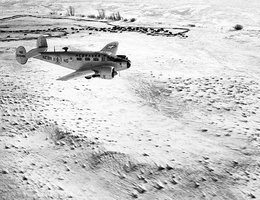
The C-47s carried a payload of 2.5 tons, the C-82s had 4.5 tons. Along with the crew on each flight was a spotter, as well as Air Force and civilian "kickers", whose job was to shove the hay out the open cargo doors of the aircraft. Kickers were kept from falling out by straps secured to a bulkhead. The spotter was a civilian familiar with the area, who guided the pilot to the ranch in need.
Volunteers arranged fifty four drops totaling about 240 tons of hay. Each of the fifty four ranchers in Garfield, Loup, and Blaine counties received from 34 to 404 bales. The Haylift program coordinated by the Chadron Junior Chamber of Commerce dropped 1,854 bales to twenty nine local ranchers.
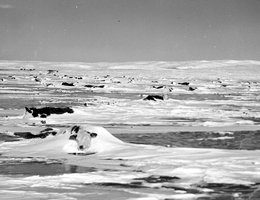
Not everyone was convinced the Haylift flights were useful. The vast number of cattle needing feed rendered Haylift impractical compared with the larger amount of relief that could be supplied by ground based operations. Haylift crews tried to drop bales as close to livestock as possible, but even if it landed within a hundred yards, animals caught in ice crusted drifts might not be able to reach it. Sometimes cattle were frightened by the aircraft and bolted.
Dan Norris of Brewster, Nebraska, put Operation Haylift in proper perspective when he said, "No doubt the operation did a great deal of good in its way. It was a temporary measure, and kept cattle alive until they could be fed in the natural way."
By the end of the first half of the twentieth century, ranchers and meatpackers had reformed, modernized, and survived two world wars and the worst blizzard in history. But could they possibly have dreamed of the phenomenal success that waited just around the corner?